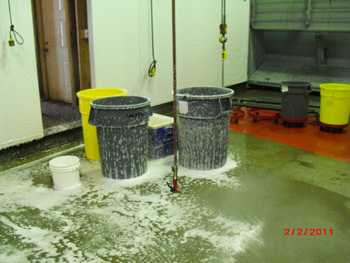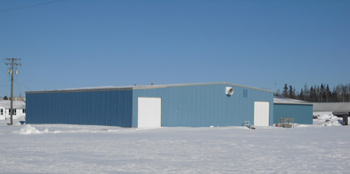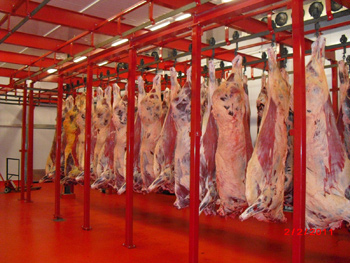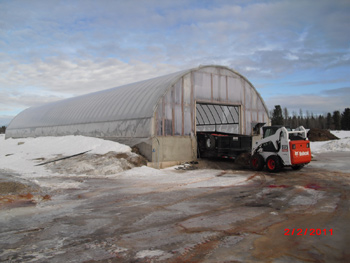
On the Limousin Plateau in south central France lies the town of Limoges, center of the Limousin breed. On the third Friday of October they hold a festival to honour and celebrate over a thousand years of their local butchers' skills. I wish we had something like that for our butcher. No one seems to appreciate the critical role he plays in the transformation of a live animal into what one little child called "supper meat".
Our butcher cut meat for Overwaitea's for thirty-five years. At home he and his family ran their own small abattoir. For over twenty years, we have been their customer. In 1996 they decided to relocate and build a bigger, more modern plant. It meets and exceeds all provincial and federal requirements. They now have an independent federal meat inspector on hand who thoroughly examines the animals before and during processing. It's a beautiful facility. Animals are received into an enclosed, quiet warehouse and are placed, often singly, in pens with bedding and are never mixed with other people's stock. Here they calm down from transport, overnight.
The chilling and cooler rooms are spacious and bright and all the metal frames are painted a brilliant red. The sides of beef flow around on overhead rails with ease. Our butcher, his family and four employees work together with pride, diligence and determination at a reasonable pace. What numbers they process carefully in a year, the big plants do in a couple of hours, but with a work force that doesn't have enough time to care or often the experience to know any better.

Hot and soapy and cold water hoses hang from the ceilings on self retracting reels, no hoses on the floor dragging around contaminants here.
The interior of the facility is sparkling white enamel walls with high ceilings and brilliant lighting, everything is spotless. Working hours on end in the cold environment of a meat cutting facility uses a lot of calories so the employees are given a hot lunch with the family every day. We think this is very commendable. At the end of every day the entire plant is washed out with soapy water, machines are taken apart and washed and left apart to dry.
All remains are ground up and hauled out to a 3000 square foot, fully enclosed composter. There it is composted for several months at temperatures of 50 to as high as 70 degrees Celsius. When completed it is used as fertilizer. We think this is pretty green.
We have been very pleased with the quality of the work and the service we have received over the years . Our heartfelt thanks go out to them for the tremendous amount of effort, commitment and capital they have invested to get their new facility up and running and approved. We know it wasn't easy. Without this service, small farms like ours would simply go under and the corporate stranglehold on our food supply would tighten. To the working owners and staff of Kawano Farms Ltd., B.C. plant 19, you have well earned the community's gratitude. Thank You!!!







